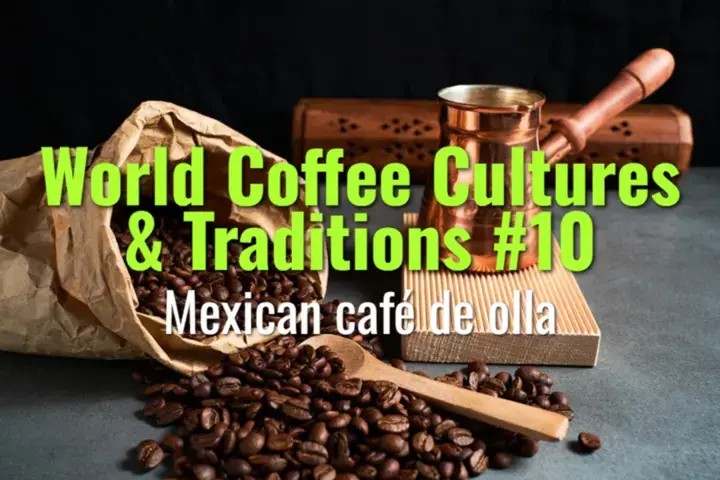Mexican café de olla
The tradition of café de olla, Mexico’s spiced coffee brewed in clay pots, and its cultural significance as a rustic, comforting drink.
- Coffee Basics Nerds
- 1 min read
Article 10 of 12 in World Coffee Cultures & Traditions/

Cultural Context
- Originated during the Mexican Revolution (1910s), when soldiers and revolutionaries drank it for warmth and energy.
- Still popular in rural communities, traditional households, and during festivals.
- Symbolizes hospitality, comfort, and cultural heritage.
Equipment & Ingredients
- Olla de barro: Clay pot that imparts earthy flavor and aroma.
- Ground coffee: Typically medium-dark roasted.
- Piloncillo: Unrefined cane sugar, rich in molasses notes.
- Cinnamon sticks (canela): Essential spice.
- Optional additions: cloves, star anise, orange peel.
Preparation Method
- Fill clay pot with water and bring to a simmer.
- Add piloncillo and cinnamon (plus optional spices), stirring until dissolved.
- Add ground coffee directly to the pot.
- Simmer briefly, then remove from heat.
- Let grounds settle, then ladle into cups, unfiltered.
Sensory Profile
- Sweet, spiced, and warming.
- Earthy undertone from the clay pot.
- Thick, rustic body with aromatic cinnamon highlights.
Serving & Occasions
- Served in clay mugs for authenticity.
- Common during holidays like Día de los Muertos or winter gatherings.
- Associated with family, tradition, and celebration.
Summary
Mexican café de olla is a rustic, spiced coffee steeped in cultural heritage. Brewed in clay pots with piloncillo and cinnamon, it embodies warmth, hospitality, and tradition, making it a treasured drink in both everyday life and festive occasions.